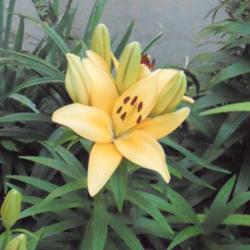Thanks, Sue, I've been wondering about that all day as I worked in the garden. We've had some discussions elsewhere here about the special rigors of prolonged high-heat, full-sun gardening in zones 9 and warmer. With three months in the 90-105 range, and most days above 100 by 8-9 am, there is drastic dormancy that arrives, to the point that mature fans in my gardens shrink way down, with both foliage and roots returning to juvenile size. It takes green-housing them over the winter and a lot of care to bring them back each year, and a long time waiting for them to try blooming again.
With that in mind, would you say that the caution not to starve established plants by cutting back their foliage might be excepted for intense exposure to long-term heating and 14-hour sunshine days in the flower bed? I'm hearing what you say about keeping the balance more toward the leaves which supply the roots with the energy the plant needs to live and thrive. But, since daylilies in my zone and higher often go "retrograde" so drastically, and water gets rationed strictly by the counties, might a slight trimming still reduce watering loads without jeopardizing the plants?
I keep thinking about the 14-hours of direct and hot sunlight ... and wondering if the overabundance of energy producing exposure might mitigate the need for full foliage? Much of it browns out at the tips very quickly anyway, without an increase in leaf production, which seems to self-limit the amount of exposure and energy production. Thank you so much for speaking to this ... it will very soon become a very big concern for many in these zones.


with the above ... but will add ... it is very likely they will send up more scapes! Many/most daylilies may rebloom, and cutting old spent stalks will encourage or hasten that. :